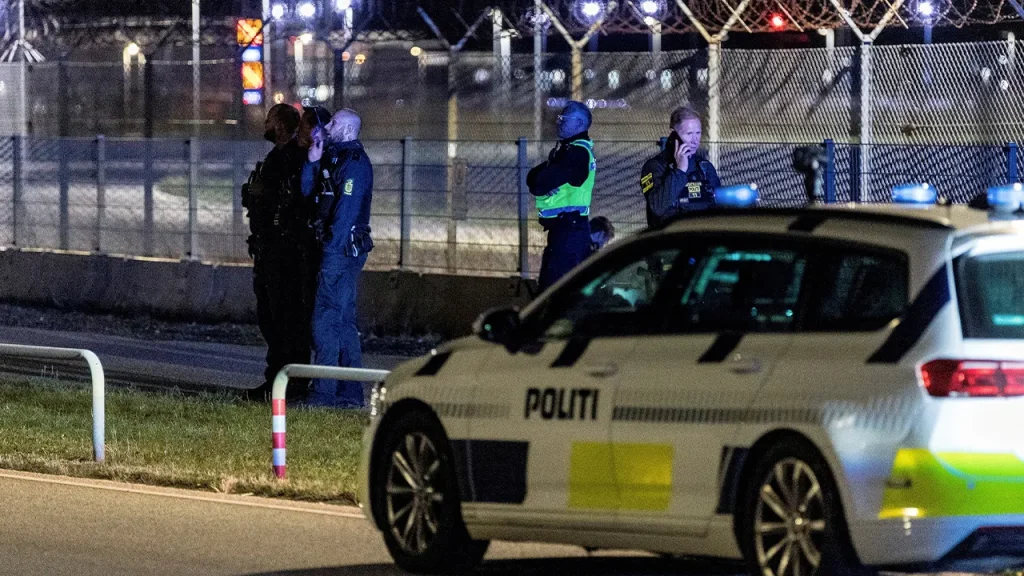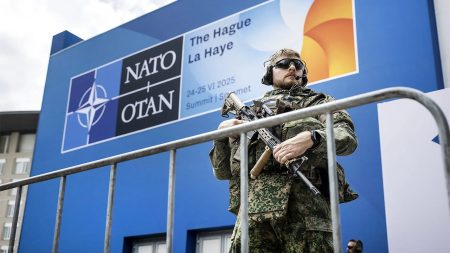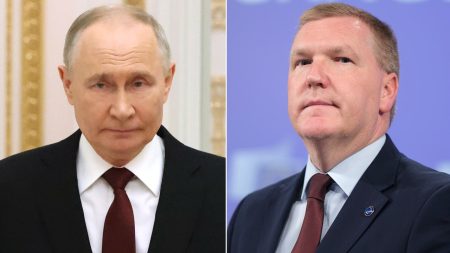Denmark Considers NATO Response to Drone Incidents at Airports
Denmark is weighing the possibility of invoking NATO’s Article 4 following a series of concerning drone sightings that forced the closure of Aalborg Airport – the second such incident in a week. This potential escalation comes as Danish authorities characterize the events as a “hybrid attack” by a “professional actor,” marking what Prime Minister Mette Frederiksen called “the most serious attack on Danish critical infrastructure to date.” The situation has prompted Denmark to reach out to both NATO and the European Union for consultation, highlighting growing security concerns across the Nordic region. While authorities have specified that the drones were launched locally rather than from Russia, officials are deliberately keeping all possibilities open regarding who might be responsible for these coordinated activities.
The incident at Aalborg Airport follows a similar disruption at Copenhagen Airport earlier in the week, creating a pattern that has Danish leadership deeply concerned. Deputy Prime Minister and Defense Minister Troels Lund Poulsen has taken a firm stance, promising that Denmark will “find the people who are behind this” and reminding potential adversaries that the country has significant military capabilities at its disposal, including F-35 fighter jets and naval frigates. The strategic nature of these incidents seems calculated, as smaller airports throughout Denmark also reportedly experienced drone activity but managed to maintain operations. This targeted approach suggests a deliberate attempt to disrupt critical transportation infrastructure rather than random acts of interference, elevating the security implications for Denmark and potentially its allies.
The timing of these events has raised alarms throughout the region, particularly as Norway’s Oslo Airport also experienced a three-hour shutdown on Monday evening due to similar drone threats. European Commission President Ursula von der Leyen contextualized the situation by stating that “the drones that halted flights at Copenhagen Airport were part of a pattern of persistent contestation at our borders,” suggesting these incidents represent a broader challenge to European security rather than isolated events. This regional pattern points to a coordinated effort to test NATO’s northeastern flank and probe the response capabilities of affected nations, creating concerns about escalating hybrid warfare tactics that blur the lines between peace and conflict.
NATO Article 4 provides a mechanism for alliance members to request consultation when they feel their territorial integrity, political independence, or security is threatened. By considering its invocation, Denmark signals the seriousness with which it views these drone incursions. Such a move would trigger formal discussions among all 32 NATO members about the nature of the threat and potential collective responses. While Secretary-General Mark Rutte has not yet made any public statements regarding Denmark’s situation, the alliance has recently been dealing with similar concerns along its eastern borders, including Poland’s reports of shooting down drones that violated its airspace. These parallel developments suggest a troubling trend of provocations along NATO’s perimeter that may require a coordinated alliance response.
The characterization of these drone incidents as “hybrid attacks” reflects the evolving nature of security threats in the 21st century. Unlike traditional military confrontations, hybrid warfare combines conventional tactics with irregular methods, including cyberattacks, disinformation campaigns, and now apparently drone activities targeting critical infrastructure. The strategic ambiguity about the source of these threats – with authorities specifying the drones were launched locally while not ruling out foreign direction – creates challenges for formulating appropriate responses. This ambiguity appears deliberate, allowing potential adversaries to test NATO’s defensive systems and decision-making processes while maintaining plausible deniability, a hallmark of modern hybrid conflict strategies.
As Denmark navigates this security challenge, the broader implications for European and transatlantic security come into focus. These incidents occur against a backdrop of heightened tensions between NATO and Russia, with concerns about escalation from the Ukraine conflict to direct confrontation with alliance members. While Danish authorities have stated that the drones did not come directly from Russia, the pattern of increasing provocations against NATO members has created an atmosphere of suspicion and vigilance. The Danish government’s forthright response, combined with their outreach to international partners, demonstrates both resolve and recognition that such hybrid threats require collective security approaches. How NATO responds to Denmark’s concerns could set important precedents for addressing similar challenges that blend below-threshold provocations with serious disruptions to critical infrastructure, potentially defining new parameters for alliance solidarity in an era of evolving security threats.















